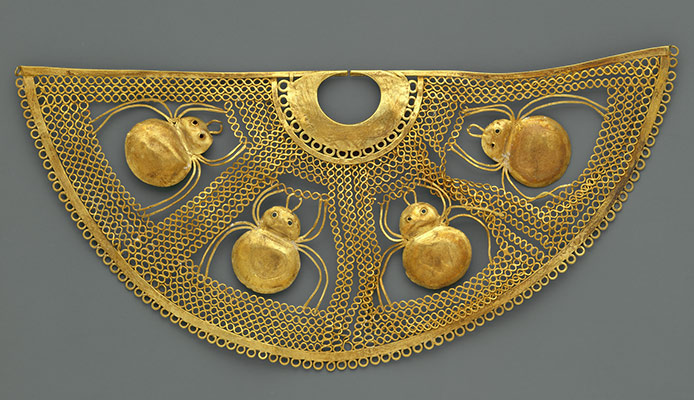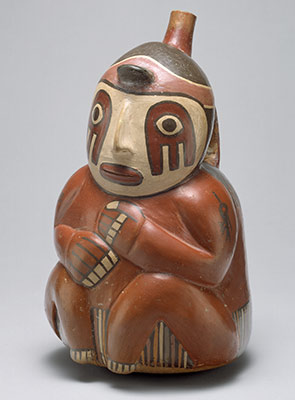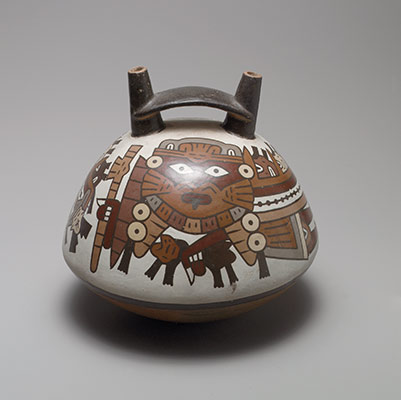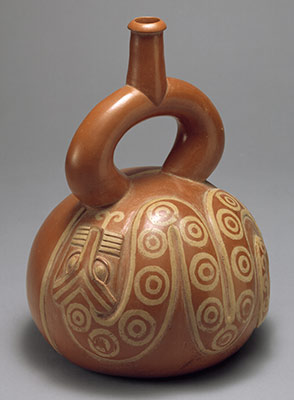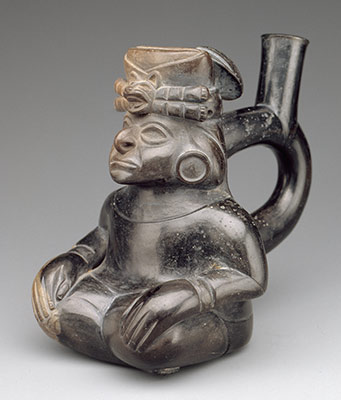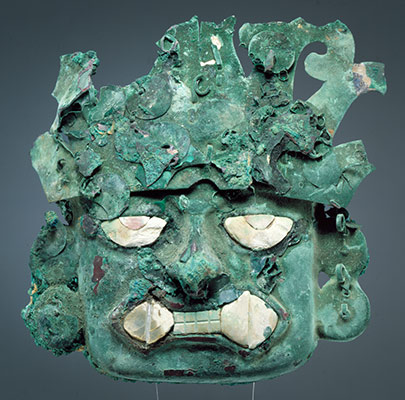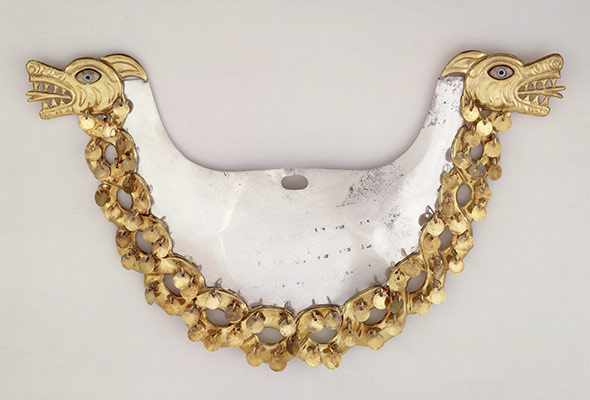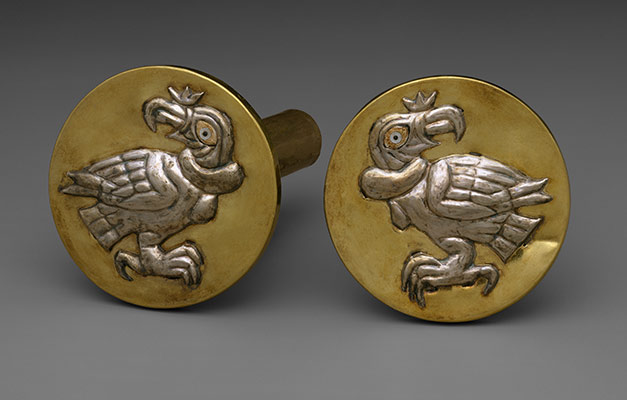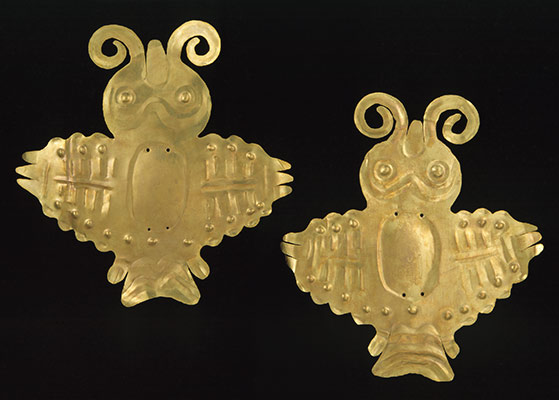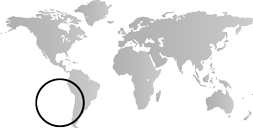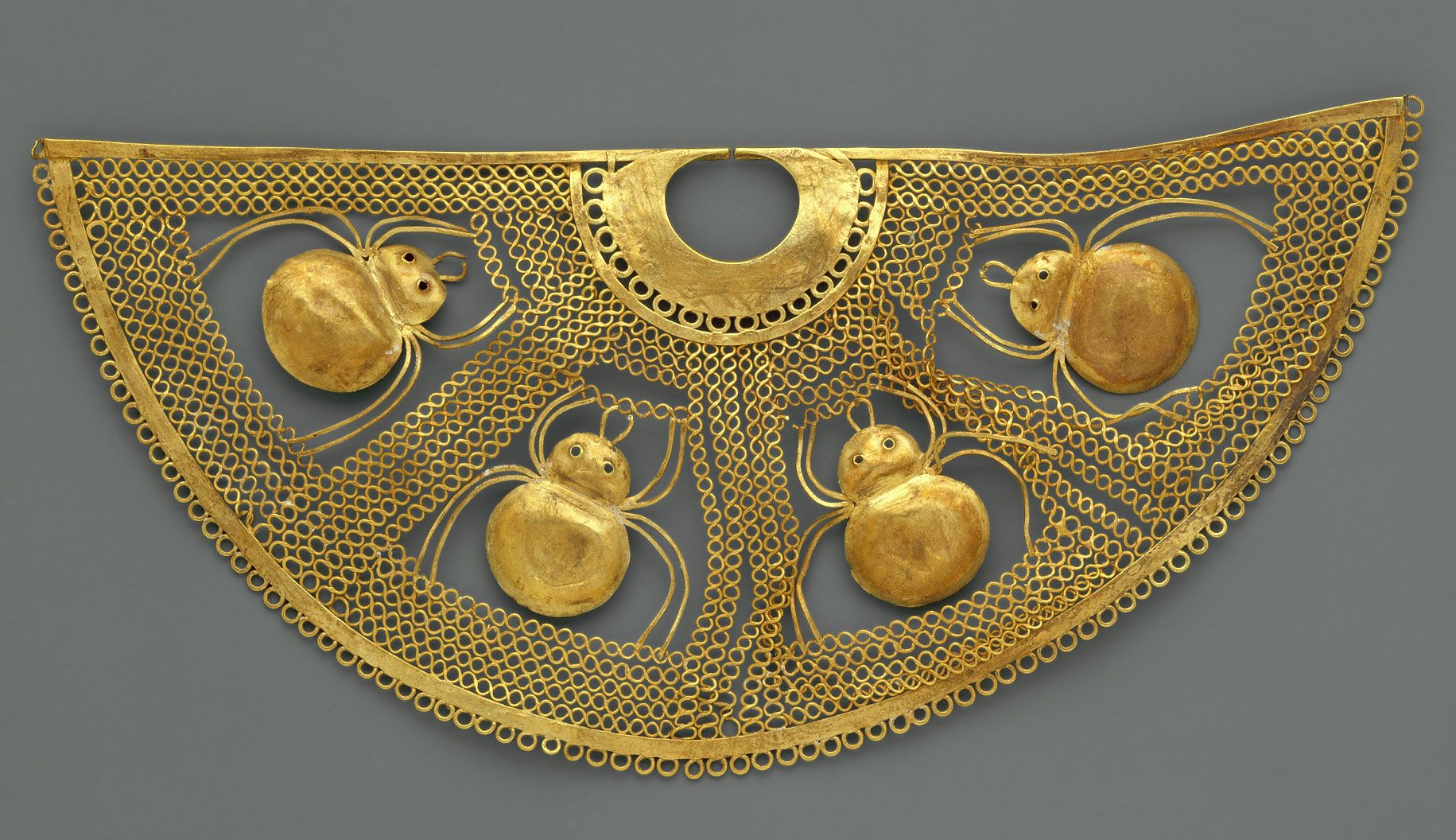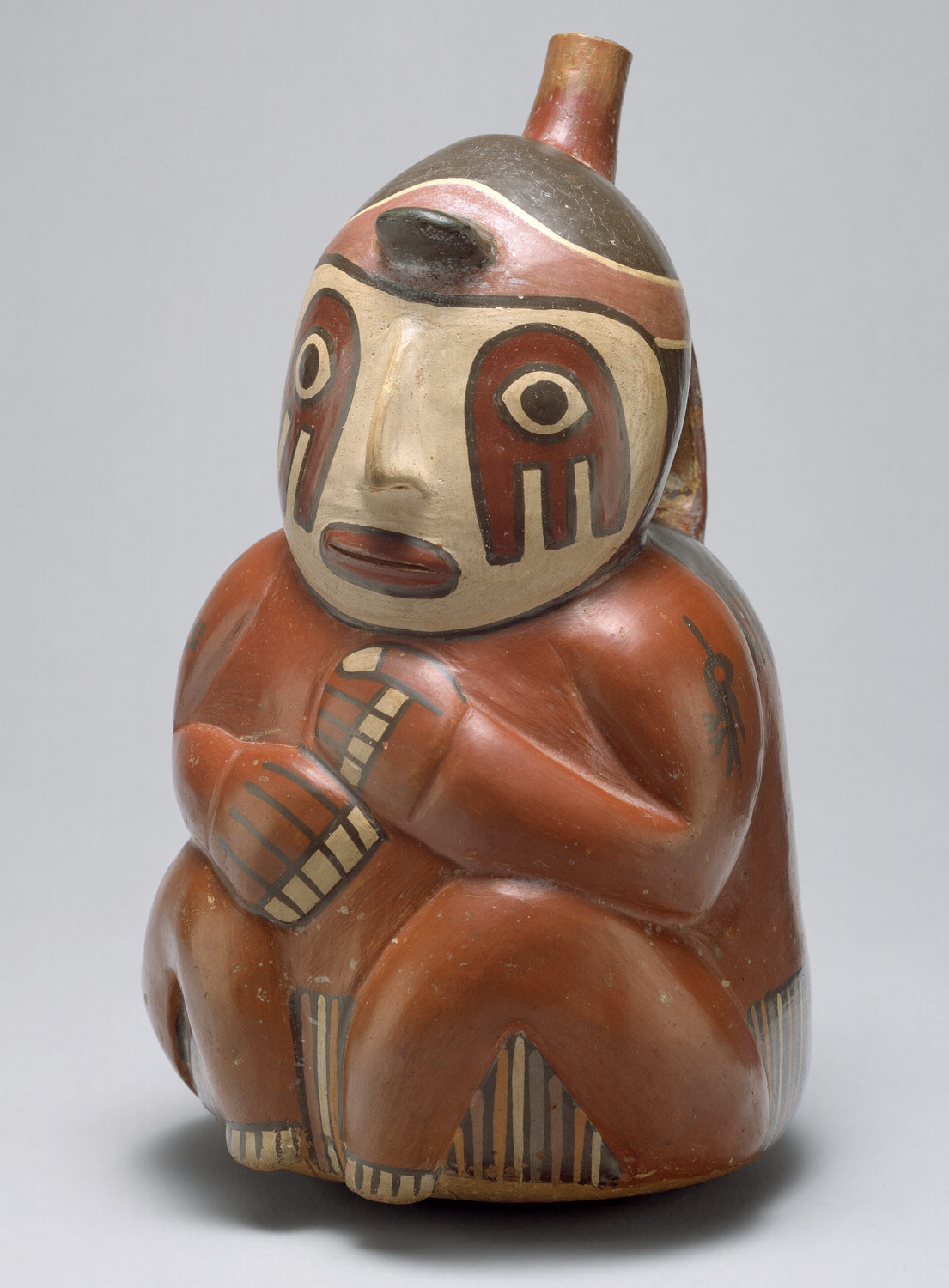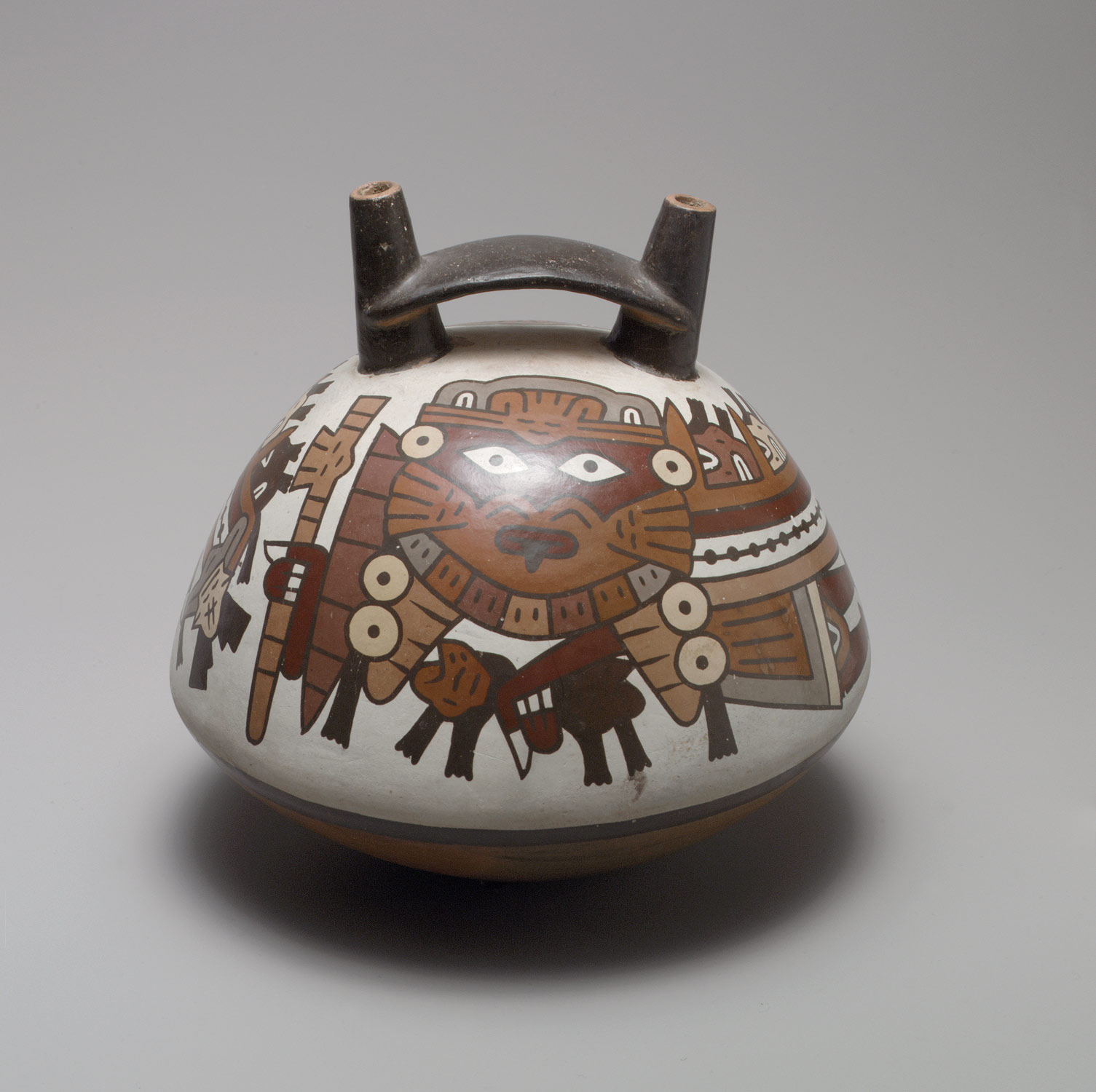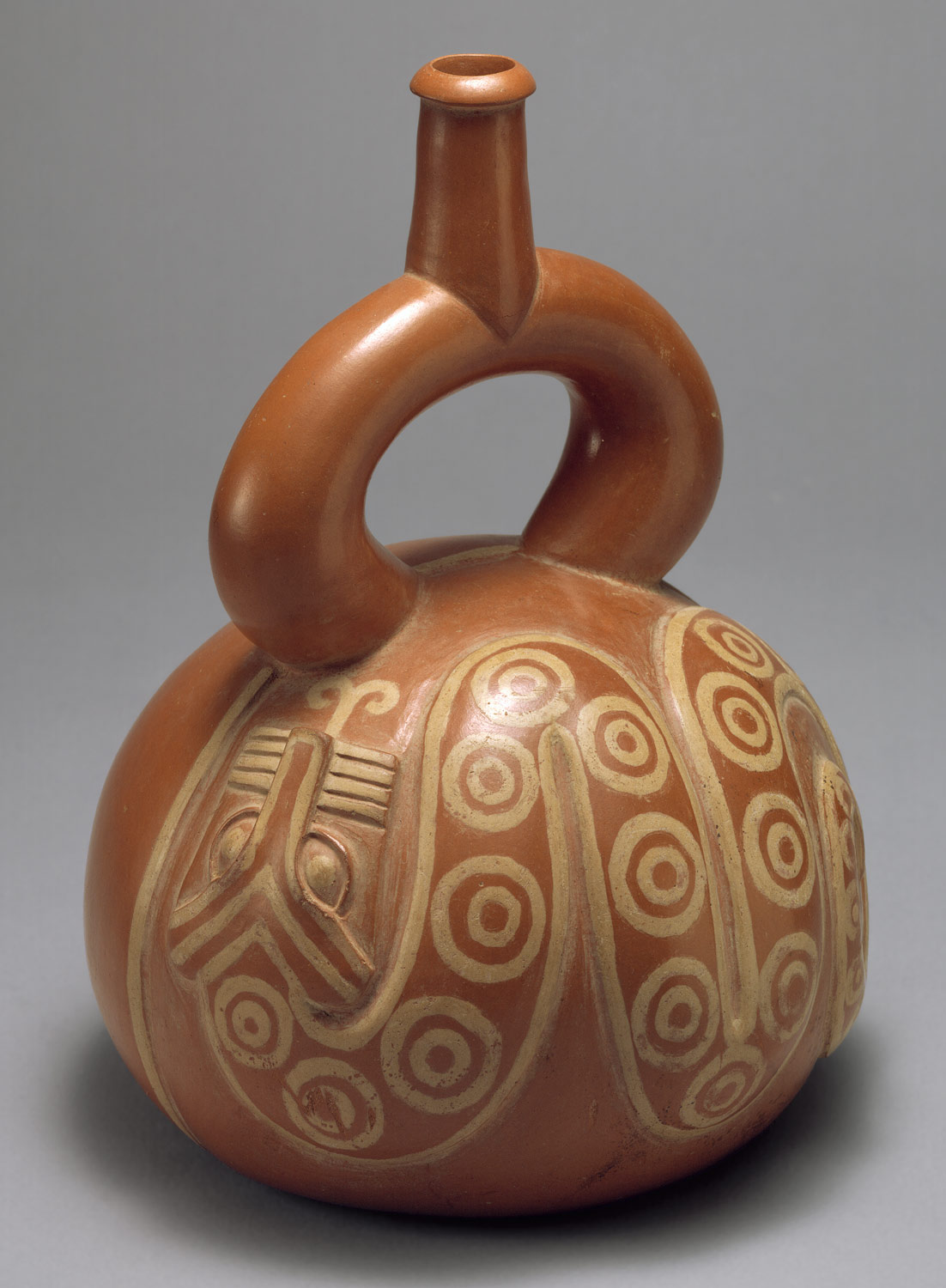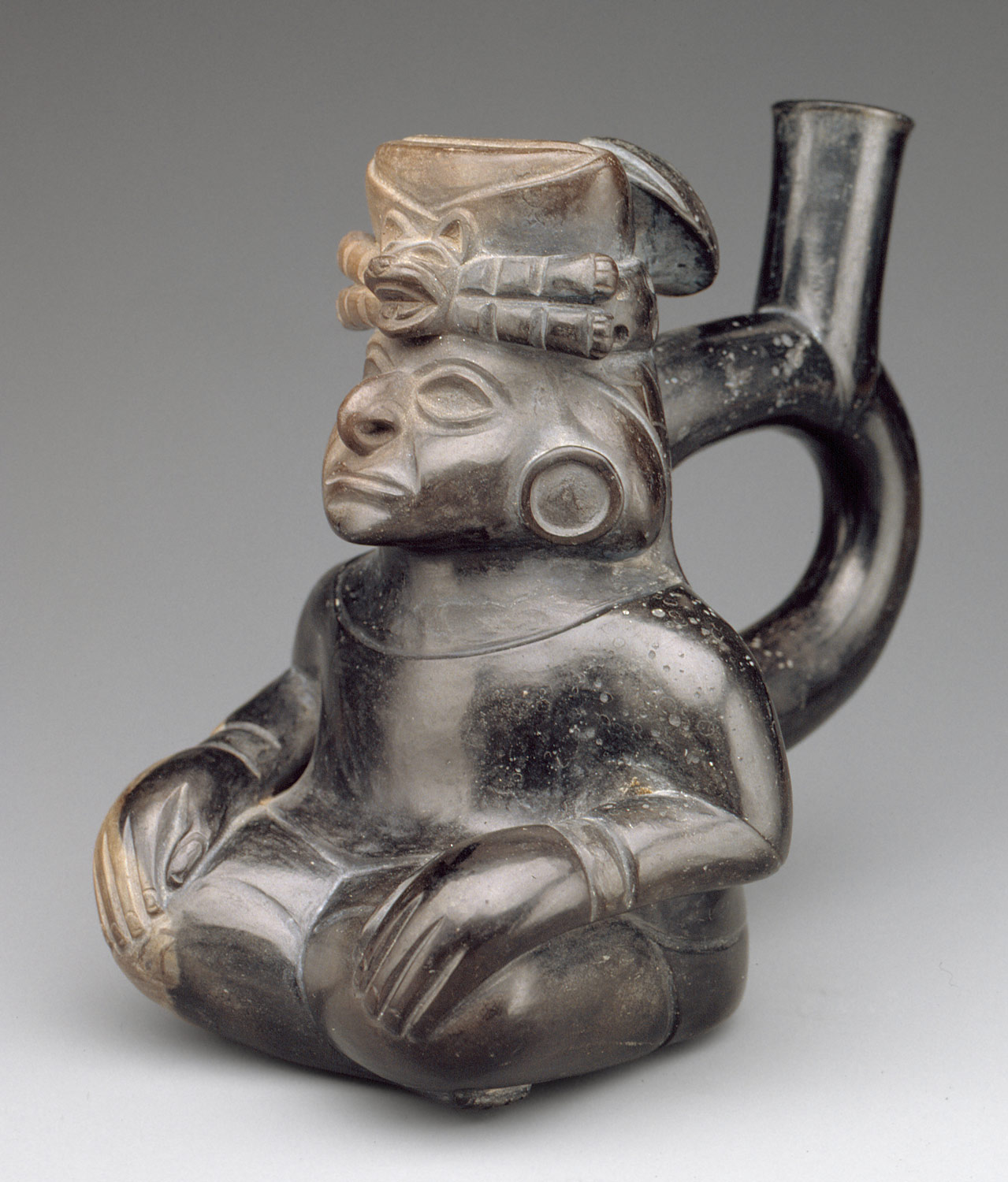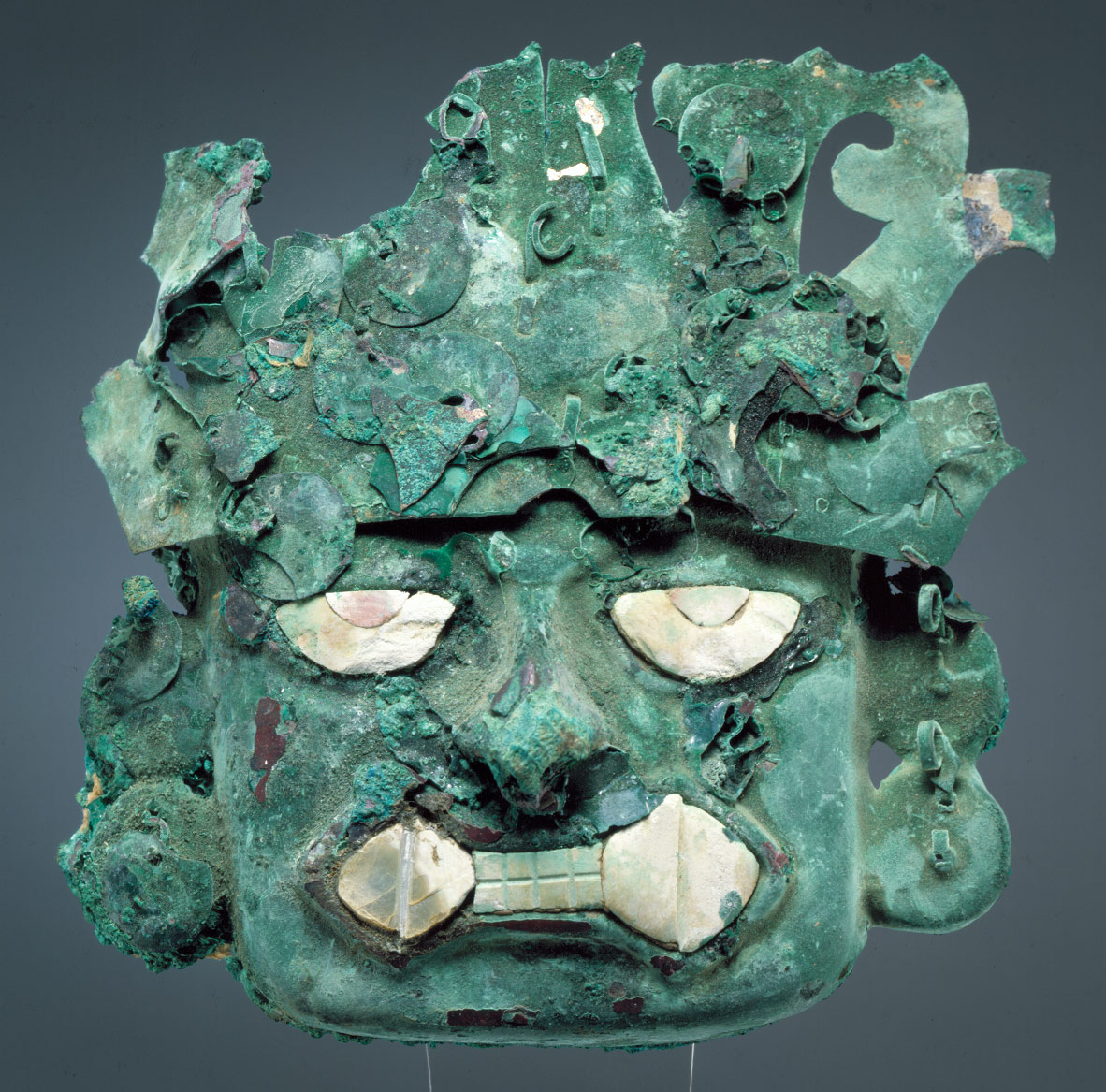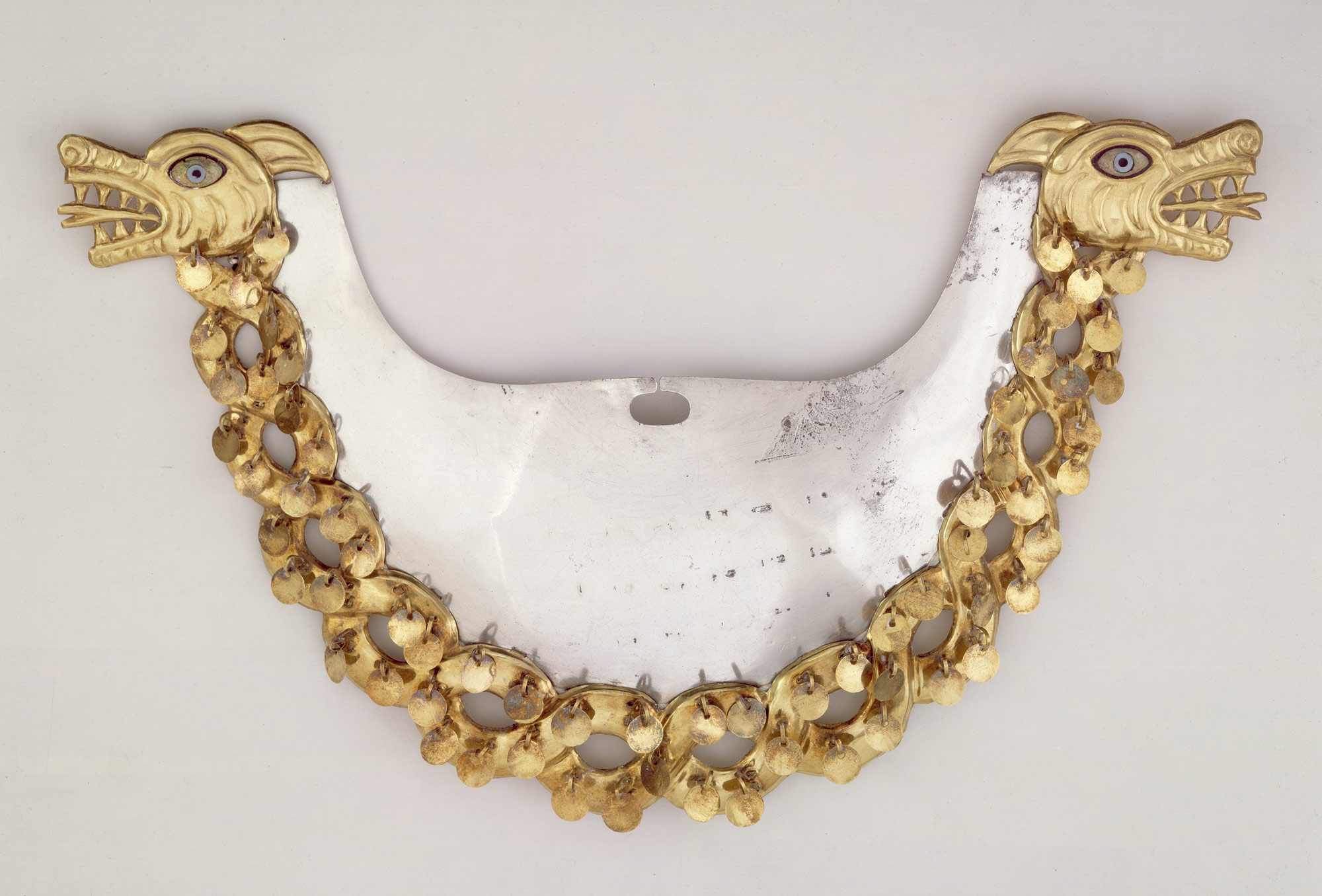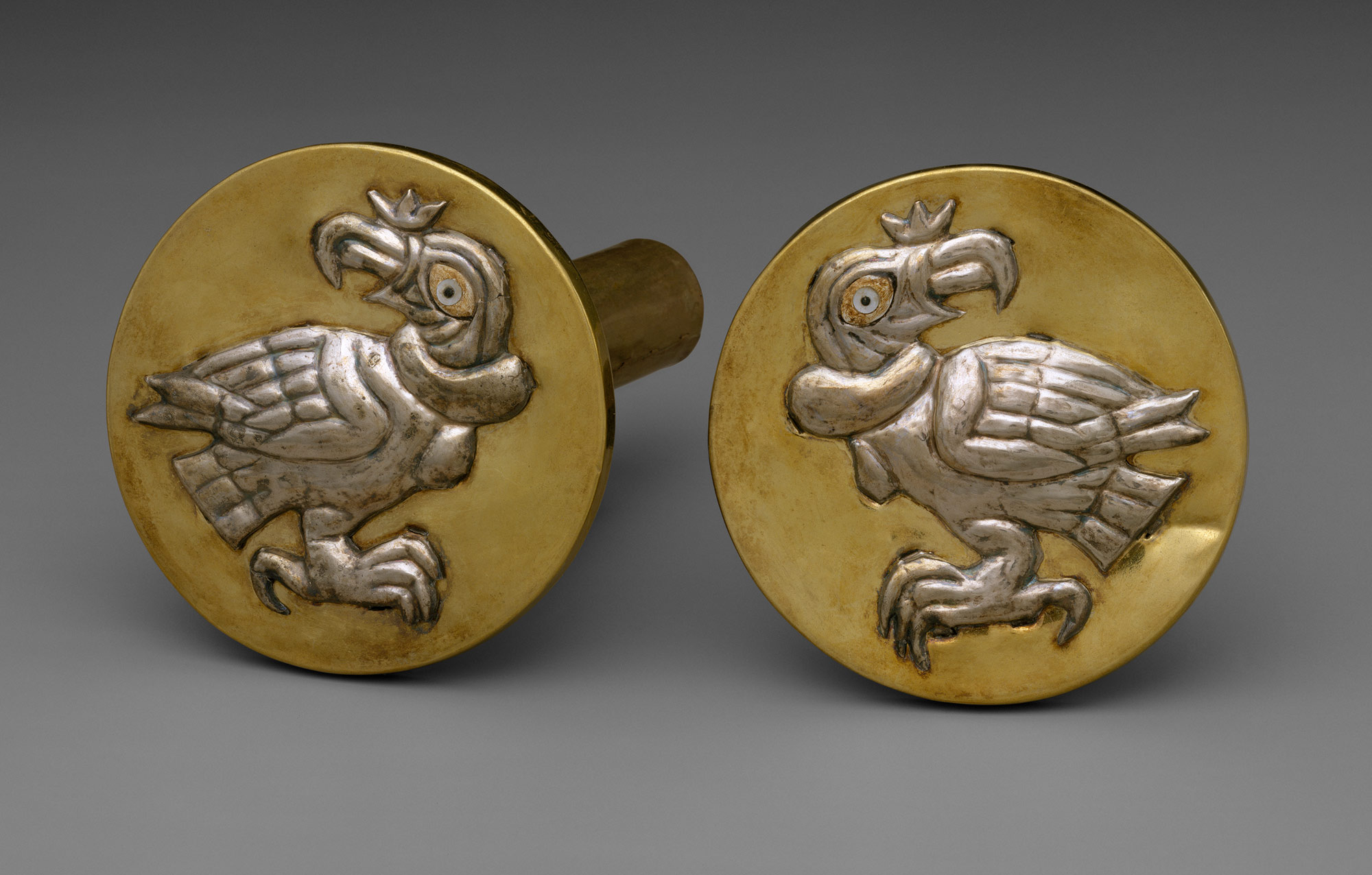After the decline of the unifying Chavín influence, much of Peru is marked by cultural diversification and the emergence of independent regional societies. In the southern Andes, local peoples, who have had their own traditions for centuries, continue to flourish. Population grows throughout the region, and territorial warfare becomes frequent. Fortified sites and defensive walls are common. Urban sites are fully established on the northern and southern coasts of Peru and in the southern Andean highlands. Governed by local elites, the accumulations of wealth and the display of luxuries show their privileged status.
Artistic production flourishes, with ethnic diversity reflected by stylistic diversity. Skilled specialists produce fine ceramic vessels using a wide range of techniques. Stone sculpture, brilliantly colored textiles, and works in metal bearing esoteric imagery are made for use in rituals and to honor the dead. Metalworkers in northern Peru, in particular, excel in creativity and technical mastery, producing some of the most spectacular works in metal ever made in the Americas. Battle scenes and trophy heads begin to appear on many works as evidence of a new ideology.
